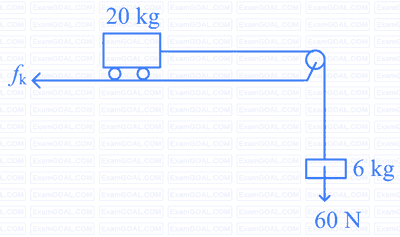
(Consider that the string is massless and unstretchable and the pulley is also massless and frictionless) :



A block of mass $$5 \mathrm{~kg}$$ is placed on a rough inclined surface as shown in the figure. If $$\overrightarrow{F_1}$$ is the force required to just move the block up the inclined plane and $$\overrightarrow{F_2}$$ is the force required to just prevent the block from sliding down, then the value of $$\left|\overrightarrow{F_1}\right|-\left|\overrightarrow{F_2}\right|$$ is : [Use $$\left.\mathrm{g}=10 \mathrm{~m} / \mathrm{s}^2\right]$$

A light string passing over a smooth light fixed pulley connects two blocks of masses $$m_1$$ and $$m_2$$. If the acceleration of the system is $$g / 8$$, then the ratio of masses is:


In the given arrangement of a doubly inclined plane two blocks of masses $$M$$ and $$m$$ are placed. The blocks are connected by a light string passing over an ideal pulley as shown. The coefficient of friction between the surface of the plane and the blocks is 0.25. The value of $$m$$, for which $$M=10 \mathrm{~kg}$$ will move down with an acceleration of $$2 \mathrm{~m} / \mathrm{s}^2$$, is: (take $$\mathrm{g}=10 \mathrm{~m} / \mathrm{s}^2$$ and $$\left.\tan 37^{\circ}=3 / 4\right)$$
